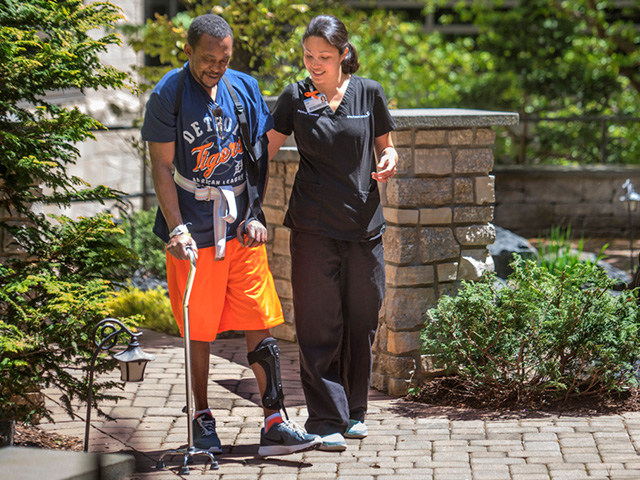
The first thing we do is get to know your knees, hips, and you as a person.
Before we make a diagnosis, we want to understand everything about you. The pain you’re in, what you’ve tried to help relieve it, and how this has affected your daily life. Only then can we start to map out the goals you want to achieve moving forward.

Together, we’ll decide on the best plan of action.
Sometimes, we can use non-surgical methods to improve pain and mobility, like physical therapy, simple things like knee braces, or anti-inflammatory medications. For others, surgery may be the best answer. Our Surgical Optimization Center (SOC) provides recommendations and individual risk assessments based on several factors including age, health and medical history, and how complex your case may be.
We’ll help you get ready, every step of the way.
From scheduling around your life, to preparation and the procedure itself, to post-operative care and rehab, we’ll make sure you’re comfortable and know what to expect along the way.

What to expect after surgery
You will likely go home that same day.
If you are not considered to be high-risk and do not experience complications, you’ll probably be able to head home right away.
You will hear from us.
Your surgeon's office (or your Nurse Navigator if you you are assigned one) will reach out regularly to see how you're doing, check if you are in pain, and if you have any questions or issues with the medications you've been prescribed. You can also always contact our Billing and Financial Counseling department for questions about insurance claims and payment options.
You will likely start moving right away.
Getting up on your feet and moving the joint as directed after surgery leads to less pain, quicker recoveries and overall better results.
You will still be seeing a lot of us.
Our physical therapists will help with your recovery and rehabilitation for as long as needed.
You will have help with your bills.
Our Billing and Financial Counseling department is always available to help you understand your bills, insurance claims and payment options, before and after your surgery.
Get our questions guide to help the conversation.
Our total joint team is here to give you total care.
Our complete team of multispecialty professionals is here for anything you may need. Have a question? Feeling like the care did not meet your expectations? Want a second opinion? We’re here to listen and to help.
- Hip and Knee Replacement Surgeons
- Non-surgical Specialists
- Orthopedic Specialists
- Nurse Navigators
- Athletic Trainers
- Medical Assistants
- Radiologists
- Lab Techs
- Physical Therapists
- Rehabilitation Specialists
A Better Approach to Care
Experience the total team difference.
